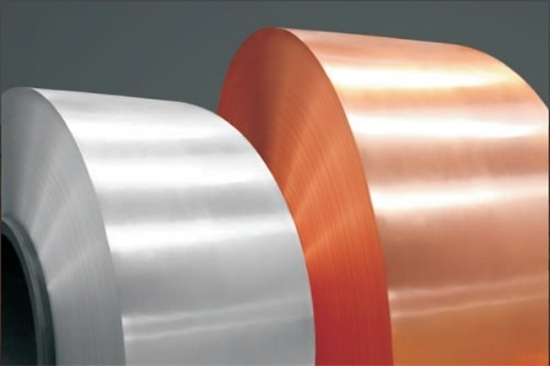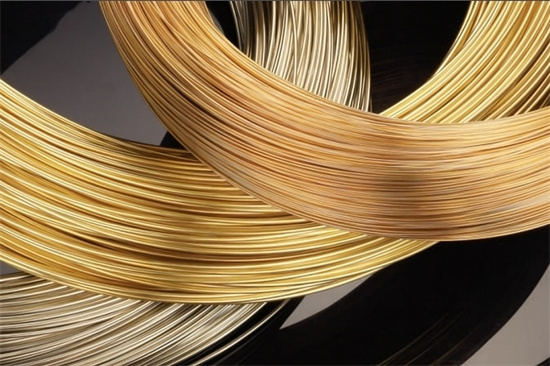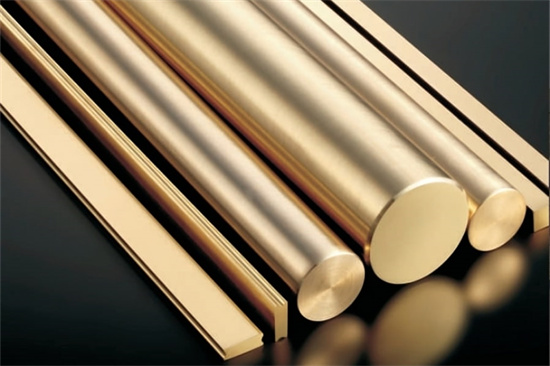


CuZn36: The Alloy Balancing Strength and Workability
Low MOQ
Provide low minimum order quantity to meet different needs.
OEM & ODM
Provide customized products and design services to meet unique customer needs.
Adequate Stock
Ensure fast order processing and provide reliable and efficient service.
Customer Satisfaction
Provide high quality products with customer satisfaction at the core.
share this article
Table of Contents
When it comes to selecting materials for engineering, manufacturing, or decorative applications, brass alloys often emerge as a top contender. Brass is not only aesthetically pleasing but also offers a blend of strength, workability, and corrosion resistance. Among the wide range of brass alloys, CuZn36 stands out as a popular choice due to its high copper content, good formability, and excellent corrosion resistance.
But what exactly is CuZn36? Why is it so widely used across various industries? How does it compare to other brass alloys? In this comprehensive guide, we’ll dive deep into CuZn36, exploring everything from its composition and mechanical properties to its applications, specifications, and pricing. By the end of this article, you’ll have a clear understanding of why CuZn36 may be the perfect material for your next project.
Overview
CuZn36, also known as C27000 or CW507L, is a brass alloy composed of approximately 64% copper (Cu) and 36% zinc (Zn). This combination gives CuZn36 a golden-yellow color, excellent corrosion resistance, and good formability. Its high copper content makes it more corrosion-resistant than higher zinc-content alloys, while still maintaining a balance of strength and ductility.
Key Characteristics :
- High Copper Content: CuZn36 has a relatively high copper content, which enhances its corrosion resistance and thermal conductivity.
- Good Formability: CuZn36 is highly workable, making it suitable for deep drawing, bending, and stamping.
- Corrosion Resistance: The alloy performs well in freshwater, mildly corrosive environments, and atmospheric conditions.
- Aesthetic Appeal: Its golden-yellow hue makes it a popular choice for decorative applications.
- Moderate Strength: CuZn36 offers a good balance between strength and ductility, making it suitable for a variety of applications where formability is crucial.
Composition and Properties
Understanding the composition and mechanical properties of CuZn36 is essential if you’re considering it for a specific application. Let’s break down its chemical makeup and explore its physical and mechanical properties in detail.
Chemical Composition
| Element | Percentage (%) |
|---|---|
| Copper (Cu) | 63.0 – 65.0 |
| Zinc (Zn) | Balance (35.0 – 37.0) |
| Lead (Pb) | ≤ 0.05 |
| Iron (Fe) | ≤ 0.05 |
| Other elements | Trace amounts |
The high copper content in CuZn36 gives it enhanced corrosion resistance and thermal conductivity, making it suitable for applications in aggressive environments.
Mechanical and Physical Properties
| Property | Value |
|---|---|
| Tensile Strength | 300 – 450 MPa |
| Yield Strength | 100 – 180 MPa |
| Elongation | 25 – 45% |
| Density | 8.44 g/cm³ |
| Hardness | 80 – 120 HB |
| Thermal Conductivity | 120 W/m·K |
| Electrical Conductivity | 28% IACS |
| Melting Point | 900 – 940°C |
Key Takeaways:
- Strength and Ductility: CuZn36 offers moderate strength with high ductility, which makes it ideal for deep drawing and forming processes.
- Corrosion Resistance: Thanks to its high copper content, CuZn36 performs well in mildly corrosive environments and maintains its properties in atmospheric conditions.
- Thermal and Electrical Conductivity: CuZn36 has relatively good thermal conductivity, making it a suitable material for heat exchangers, while its electrical conductivity is moderate, making it useful for low-voltage electrical applications.
Applications
Thanks to its combination of strength, formability, and corrosion resistance, It is widely used across multiple industries. From automotive to plumbing, it continues to prove itself as a versatile brass alloy.
Common Applications
| Industry | Typical Applications |
|---|---|
| Plumbing | Pipes, fittings, valves, and couplings |
| Electronics | Connectors, terminals, and low-voltage components |
| Automotive | Radiators, gaskets, and decorative trim |
| Construction | Architectural hardware, door handles, and fixtures |
| HVAC | Heat exchangers, condenser tubes, and evaporators |
| Decorative | Jewelry, coins, ornamental items, and musical instruments |
Why CuZn36 is Ideal for These Applications:
- Plumbing: CuZn36’s corrosion resistance and workability make it a top choice for pipes, valves, and fittings used in freshwater environments.
- Electronics: The alloy’s good electrical conductivity makes it a solid choice for connectors and terminals where low-voltage performance is required.
- Automotive: CuZn36’s balance of thermal conductivity and strength makes it ideal for use in radiators and heat exchangers.
- Construction: CuZn36’s golden color and corrosion resistance make it a popular choice for architectural hardware and decorative elements.
- HVAC: CuZn36’s thermal conductivity and corrosion resistance make it especially suited for heat exchangers and condenser tubes.
- Decorative: The alloy’s bright finish and malleability make it perfect for items like jewelry and ornamental pieces.
Specifications, Sizes, and Standards
Knowing the specifications, sizes, and standards for CuZn36 is crucial when sourcing materials for your project. The following table provides a general overview of available sizes and standards for it.
Common Standards and Specifications
| Standard | Description |
|---|---|
| ASTM B36 | Specification for brass plates, sheets, strips, and rolled bars |
| EN 1652 | European standard for copper and copper alloys in strip form |
| JIS H3250 | Japanese standard for brass plates and strips |
| ISO 431 | International standard for brass alloy compositions |
Available Forms and Sizes
| Form | Size Range |
|---|---|
| Rods | Diameter: 5 mm to 120 mm |
| Sheets/Plates | Thickness: 0.5 mm to 50 mm |
| Tubes | Diameter: 6 mm to 100 mm |
| Wires | Diameter: 0.5 mm to 10 mm |
Depending on the supplier, custom sizes can be manufactured to meet specific project requirements, ensuring that you get the exact materials you need.
Suppliers and Pricing
Understanding the availability and pricing of CuZn36 is essential when planning your project. Prices for CuZn36 can vary depending on supplier location, market conditions, and order size.
Typical Suppliers and Pricing
| Supplier | Location | Price Range (per kg) | Lead Time |
|---|---|---|---|
| KME Germany | Germany | $7 – $12 | 2-4 weeks |
| Aviva Metals | USA | $8 – $14 | 1-3 weeks |
| Shanghai Metal Corporation | China | $6 – $11 | 3-5 weeks |
| Smiths Metals | UK | £6 – £12 | 1-2 weeks |
Factors Affecting CuZn36 Pricing
- Market Conditions: The prices of copper and zinc fluctuate in response to global supply and demand, impacting CuZn36’s cost.
- Order Quantity: Larger orders often come with bulk pricing discounts, while smaller orders may have a slightly higher price per kilogram.
- Form and Processing: Sheets, rods, and custom-cut components may come with additional processing fees, making them more expensive than standard forms.
- Shipping and Logistics: Sourcing materials from international suppliers could incur additional shipping costs and import taxes.
Advantages and Limitations
As with any material, it comes with its own set of advantages and limitations. Knowing the pros and cons of this brass alloy can help you make an informed decision for your specific application.
Advantages and Limitations
| Advantages | Limitations |
|---|---|
| Excellent formability: It can be easily worked in cold conditions, making it ideal for deep drawing and stamping. | Moderate strength: While it offers good formability, its strength is lower than some other brass alloys. |
| Good corrosion resistance: Its high copper content provides good protection against corrosion in non-aggressive environments. | Not suitable for high-stress applications: CuZn36’s strength may not be sufficient for applications that require high mechanical loads. |
| Aesthetic appeal: It has a bright, golden-yellow finish, making it a great choice for decorative applications. | Limited machinability: It isn’t as machinable as leaded brasses like CuZn39Pb3, which may limit its use in precision machining. |
| Affordable: It is more cost-effective than some higher-copper-content alloys, making it ideal for mass production. | Lower electrical conductivity: While better than some other alloys, CuZn36’s electrical conductivity is lower than that of pure copper. |
Comparing CuZn36 with Other Brass Alloys
When selecting the best brass alloy for your project, it’s critical to compare CuZn36 with other commonly used alloys. Each alloy has its own strengths and weaknesses, so understanding how it stacks up against alternatives can help you make the right choice.
CuZn36 Compared to Other Brass Alloys
| Property | CuZn36 | CuZn37 | CuZn39Pb3 | CuZn40 |
|---|---|---|---|---|
| Tensile Strength | 300 – 450 MPa | 300 – 500 MPa | 300 – 450 MPa | 350 – 550 MPa |
| Machinability | Moderate | Moderate | Excellent | Good |
| Corrosion Resistance | Good | Good | Moderate | Good |
| Electrical Conductivity | 28% IACS | 28% IACS | 25% IACS | 28% IACS |
| Formability | Excellent | Excellent | Good | Good |
Key Comparisons:
- CuZn36 vs. CuZn37: Both alloys offer excellent formability, but CuZn37 may have slightly better strength. CuZn36, however, is more commonly used in decorative applications due to its bright finish.
- CuZn36 vs. CuZn39Pb3: CuZn39Pb3 is superior in terms of machinability, thanks to the presence of lead, but CuZn36 offers better corrosion resistance and is a more suitable choice for ornamental applications.
- CuZn36 vs. CuZn40: CuZn40 provides higher strength and better machinability, making it a better choice for load-bearing components, whereas CuZn36 is more suitable for deep drawing and stamping.
Frequently Asked Questions (FAQ)
To help you better understand CuZn36, here are some frequently asked questions about this alloy.
| Question | Answer |
|---|---|
| What is it used for? | It is commonly used in plumbing, automotive, decorative, and HVAC applications due to its formability and corrosion resistance. |
| Is it suitable for electrical applications? | It has moderate electrical conductivity, making it suitable for low-voltage electrical components. |
| How does it compare to other brass alloys? | It offers excellent formability and corrosion resistance, but other alloys like CuZn39Pb3 may offer better machinability. |
| Can it be machined easily? | It is moderately machinable but isn’t as easy to machine as leaded brasses like CuZn39Pb3. |
| What is the tensile strength of CuZn36? | It has a tensile strength ranging from 300 to 450 MPa, depending on processing methods. |
| Is it lead-free? | Yes, it is a lead-free alloy, making it safe for use in drinking water systems and other applications where lead content is restricted. |
Conclusion
It is a versatile brass alloy that combines a range of beneficial properties, including good formability, corrosion resistance, and aesthetic appeal. Whether you’re designing plumbing systems, creating decorative hardware, or manufacturing automotive components, it offers the strength, workability, and cost-effectiveness you need.
While it might not offer the highest strength or machinability compared to other brass alloys, CuZn36’s balance of properties makes it an ideal choice for applications where formability and corrosion resistance are critical. If you’re looking for a brass alloy that delivers performance without breaking the bank, it should be at the top of your list.
Maybe you want to know more about our products, please contact us
Get Latest Price
About Met3DP
Product Category
HOT SALE
CONTACT US
Any questions? Send us message now! We’ll serve your request with a whole team after receiving your message.

Metal Powders for 3D Printing and Additive Manufacturing
COMPANY
PRODUCT
cONTACT INFO
- Qingdao City, Shandong, China
- [email protected]
- [email protected]
- +86 19116340731








